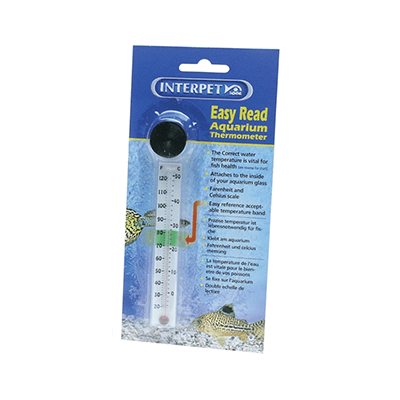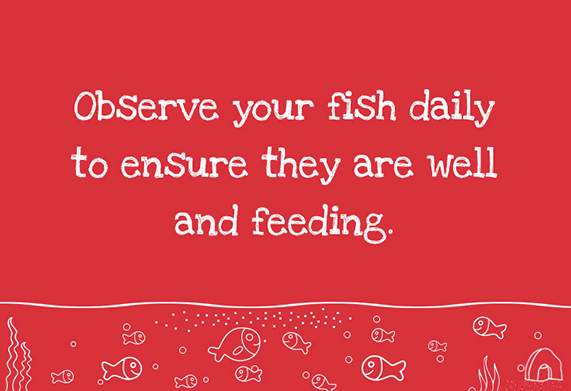Day to day care of your aquarium
Aquariums are not just a beautiful addition to your home but also a controlled ecosystem that requires proper attention and care. Many aquarium owners make common mistakes unknowingly, which can harm the inhabitants and disrupt the overall balance of the tank.
Your aquarium needs daily attention to thrive. It’s simple, just follow these seven easy steps for a healthy and vibrant aquarium.
1. Get the right equipment

You’ll need a bucket, net, magnetic glass cleaner, gravel cleaner, fish food, tap water conditioner, aquarium test kit and replacement filter service packs.
2. Take a look

As part of your daily routine observe your fish. Watching your fish will help you understand what ‘normal’ activity looks like in your aquarium.
More importantly, you’ll easily notice unusual activity that could indicate ill health or conflict between fish.
If you start to notice problems, use our online diagnostic tool to find out what is wrong and, more importantly, how to fix the problem.
3. Feed your fish

Fish usually need to eat 2-3 times a day. Feed a little at a time, as much as the fish will eat in a few minutes, and remove any leftovers with a net.
Did you know that more fish die of overfeeding than underfeeding?
This is because over feeding means there is more food waste that can be left to rot and pollute the water which in turn can harm or even kill your fish.
So it’s a good idea to make sure only one person in the house is feeding the fish and removing any left overs.
If your aquarium is very newly set-up, keep feeding to just once a day (see – Understanding the Nitrogen Cycle for more advice on new aquariums).
4. Clean the glass

Just like the windows on your house, aquarium glass can get dirty very easily, with algae being the most common cause of dirt on the inside of the glass.
Give the glass inside your aquarium a clean with a simple-to-use magnetic glass cleaner. Be careful to not get gravel stuck under the cleaner as this will scratch the glass. Polymer wool is also handy to use to wipe the corners of the tank which a magnet cleaner finds hard to reach.
The outside glass of the aquarium can be wiped with a damp cloth and dried with a dry cloth or towel. Never use glass cleaning products as the spray can easily get into the aquarium and poison your fish.
5. Remove dead plants and fish

Rapid removal of dead plants, leaves and fish will prevent decay from polluting the water.
Doing this regularly along side removing any left over fish food before it has the chance to rot, will help keep your tank in tip top condition for your fish to thrive in.
6. Check your filter

A well-running filter is essential to the health and hygiene of your aquarium.
To be sure your filter is in tip-top condition, check it’s running correctly and that the water is flowing with ease. This is important for the health of your fish and the filter bacteria. (Learn more about your filter and bacteria)
7. Check the aquarium temperature
Keep an eye on your aquarium’s temperature using your aquarium thermometer, especially in warm weather.
Depending on the type of heater you have, the water can rise above the correct level if the room temperature is warmer than normal.
A small change shouldn’t cause a problem for most tropical fish species, but a large rise in temperature will. If this happens then it’s important to gently reduce the temperature without affecting the health of your aquarium.

FAQs
How can I prevent algae from taking over my aquarium?
Algae growth is a common concern for aquarium owners, but with a few preventive measures, you can keep it under control. Ensure your tank receives the right amount of light. Excessive light exposure can fuel algae growth, so a proper balance is crucial. Use a timer to regulate the number of hours your aquarium light is on.
Avoid placing your tank near direct sunlight, as it can contribute to algae problems. Regular water changes and good filtration can also help prevent excess nutrients that algae thrive on.
How can I maintain the pH level in my aquarium?
pH levels are a massive part of your aquarium’s health. Test the water regularly using a reliable pH test kit and aim for a stable range suitable for your fish species.
We have water treatments specifically for lowering pH or increasing pH in your aquarium.
Remember to monitor the pH levels consistently to ensure they remain stable within the appropriate range.
How often should I change the aquarium water?
Regular water changes are crucial for maintaining a healthy aquarium ecosystem. Water changes depend on various factors, including the tank size, stocking levels, and filtration system. A partial water change of 25% is recommended every 2-4 weeks. However, this may vary based on the water parameters and the habits of your specific fish species.
Remember to dechlorinate tap water before adding it to the tank and to match the temperature and pH of the replacement water to avoid shocking your fish.
Watch: How to do an aquarium water change
How do I maintain the right water temperature for my aquarium?
Most fish species thrive within a specific temperature range. Use an aquarium heater and thermometer to monitor and adjust the temperature as needed.
Set the heater to the appropriate temperature recommended for your fish species and ensure it is placed in an area with good water circulation. Sudden temperature fluctuations can be harmful to fish, so avoid placing the aquarium near drafty areas or direct sunlight. Regularly check the thermometer and adjust the heater if necessary to keep the water temperature stable.


